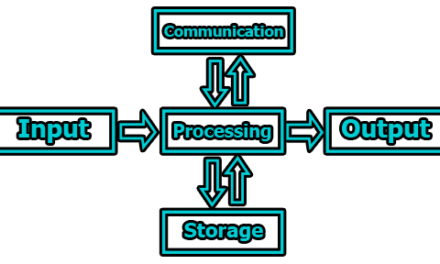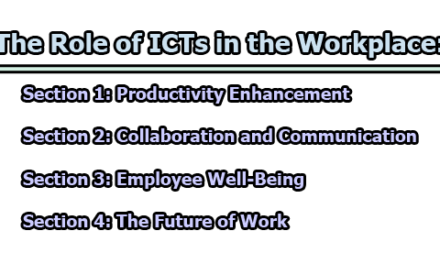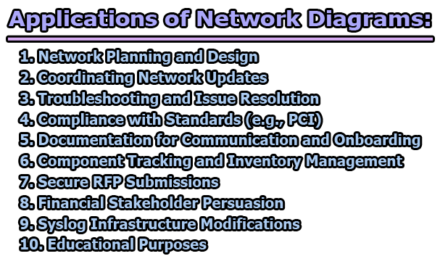Exploring Intellectual Dynamics in Borrowed Knowledge:
In a world characterized by information abundance and interconnectedness, the concept of “Borrowed Knowledge” takes center stage as a dynamic and multifaceted phenomenon. As individuals, communities, and societies strive for progress and development, the exchange of ideas, technologies, and intellectual capital becomes increasingly integral to innovation and growth. In the rest of this article, we will discuss the following statement “exploring intellectual dynamics in borrowed knowledge” examining its historical roots, ethical implications, and its transformative impact on various fields.
Historical Perspectives on Borrowed Knowledge:
The concept of Borrowed Knowledge has deep historical roots, reflecting the exchange of ideas, technologies, and cultural practices that have significantly shaped societies and fostered progress. The examination of historical perspectives provides valuable insights into the foundations of intellectual exchange and its transformative impact on various civilizations.
1. The Silk Road and Cultural Exchange: The Silk Road, established during the Han Dynasty around 130 BCE, stands as a paradigmatic example of historical knowledge exchange. This vast network of trade routes facilitated the movement of goods, ideas, and technologies between the East and the West. The exchange of silk, spices, and other commodities accompanied the transfer of knowledge in fields such as astronomy, medicine, and mathematics, illustrating a rich tapestry of shared knowledge across diverse civilizations (McNeill & McNeill, 2003).
2. The Renaissance and Classical Revival: The Renaissance, a cultural and intellectual movement from the 14th to the 17th century in Europe, witnessed a revival of interest in classical knowledge from ancient Greece and Rome. Scholars and artists of the Renaissance sought inspiration from classical texts, art, and philosophy, leading to a renewal of ancient ideas and the birth of new intellectual currents. The works of figures like Leonardo da Vinci and Michelangelo exemplify the assimilation and reinterpretation of classical knowledge (Burke, 1999).
3. Scientific Revolution and Knowledge Synthesis: The Scientific Revolution of the 17th century marked a profound transformation in knowledge production and dissemination. Pioneering scientists such as Galileo Galilei and Johannes Kepler built upon the work of their predecessors, incorporating borrowed knowledge to advance understanding of the natural world. The synthesis of observations, experimentation, and mathematical models showcased how borrowed knowledge catalyzed revolutionary breakthroughs in science (Shapin, 1996).
4. Colonial Encounters and Knowledge Transfer: The age of exploration and colonialism facilitated new waves of knowledge exchange as European powers encountered diverse cultures globally. The Columbian Exchange, involving the transfer of plants, animals, and technologies between the Old and New Worlds, exemplifies how borrowed knowledge transformed societies on both sides of the Atlantic (Crosby, 2003).
5. Islamic Golden Age and Preservation of Knowledge: During the Islamic Golden Age (8th to 14th centuries), the Islamic world became a hub of knowledge and innovation. Islamic scholars preserved and translated classical Greek and Roman texts, ensuring the transmission of ancient knowledge. The House of Wisdom in Baghdad played a pivotal role in preserving and disseminating knowledge, making significant contributions to various fields (Saliba, 2011).
6. Chinese Inventions and Global Impact: China’s historical contributions include numerous inventions with a global impact. Technologies such as papermaking, printing, and gunpowder, originating in ancient China, were borrowed and adapted by other civilizations. The spread of these innovations along trade routes and through cultural exchanges illustrates the far-reaching consequences of borrowed knowledge in shaping history (Needham, 1954-2008).
The Modern Landscape of Borrowed Knowledge:
In the contemporary era, the landscape of Borrowed Knowledge has evolved significantly, driven by globalization, digital communication, and rapid technological advancements. This dynamic phenomenon is characterized by the exchange of ideas, technologies, and intellectual capital on a global scale. Examining the modern landscape provides insights into how Borrowed Knowledge influences innovation, collaboration, and progress in various fields.
1. Globalization and Knowledge Flows: Globalization has transformed the way information is shared and accessed. The interconnectedness of economies and societies has facilitated the seamless flow of knowledge across borders. Information and ideas travel rapidly, transcending geographical boundaries, and contributing to a global knowledge ecosystem (Held et al., 1999).
2. Digital Communication and Open Access: The advent of the internet and digital communication technologies has revolutionized the dissemination of knowledge. Open-access platforms and digital repositories have democratized access to information, enabling researchers, professionals, and the public to benefit from a wealth of shared knowledge (Suber, 2012).
3. Collaborative Research Initiatives: Collaborative research has become a cornerstone of modern scientific endeavors. Researchers from different parts of the world come together to pool their expertise, resources, and perspectives. Collaborative efforts contribute to tackling complex challenges that require diverse skill sets and multidisciplinary approaches (Wuchty et al., 2007).
4. International Partnerships in Innovation: International partnerships play a crucial role in fostering innovation. Collaborations between research institutions, universities, and industries across borders facilitate the transfer of knowledge and technology. These partnerships contribute to advancements in science, technology, and various other fields (Narin et al., 1997).
5. Open-Source Development and Knowledge Sharing: Open-source initiatives exemplify the power of shared knowledge in the realm of software development. Communities of developers collaboratively contribute to the creation and improvement of software, emphasizing transparency and open exchange. This approach accelerates innovation and allows for the widespread adoption of cutting-edge technologies (Raymond, 1999).
6. Crowdsourcing and Collective Intelligence: Crowdsourcing leverages the collective intelligence of a diverse group of individuals to solve problems or generate ideas. Online platforms and social networks facilitate large-scale collaboration, enabling the collective brainpower of individuals globally to contribute to innovation and problem-solving (Brabham, 2008).
7. Knowledge Transfer in Global Research Networks: The establishment of global research networks has become integral to knowledge transfer. These networks connect researchers, institutions, and organizations, allowing for the exchange of data, methodologies, and insights. Global collaboration enhances the speed and efficiency of scientific discovery (Vicente-Saez & Martinez-Fuentes, 2018).
8. Technology Transfer and Innovation Adoption: Borrowed Knowledge extends beyond theoretical concepts and research findings to include the transfer of technologies. Developing countries often adopt and adapt technologies pioneered in more advanced economies, leading to advancements in healthcare, agriculture, and infrastructure (United Nations Conference on Trade and Development, 2005).
Ethical Considerations in Borrowed Knowledge:
The practice of Borrowed Knowledge, while contributing to innovation and progress, is accompanied by a myriad of ethical considerations that demand careful examination. These ethical dimensions encompass issues of attribution, cultural sensitivity, and the potential for exploitation, requiring a nuanced approach to ensure responsible and equitable intellectual exchange.
1. Attribution and Acknowledgment: One of the fundamental ethical considerations in Borrowed Knowledge is the issue of proper attribution and acknowledgment. Failure to credit the original source of ideas or research findings constitutes plagiarism, a breach of academic and scientific integrity (Committee on Publication Ethics, 2019). Transparent citation practices and ethical research conduct are imperative to maintain the credibility of the knowledge-sharing process.
“Proper attribution is a cornerstone of ethical research, preventing the misappropriation of intellectual contributions and ensuring the integrity of the scholarly discourse” (Committee on Publication Ethics, 2019).
2. Cultural Appropriation: Borrowing knowledge from different cultures raises ethical concerns related to cultural appropriation. Cultural appropriation occurs when elements of one culture are adopted by another without a proper understanding or respect for their significance (Rogers, 2006). This can perpetuate stereotypes, erode cultural identities, and contribute to cultural insensitivity.
“Navigating the complexities of cultural borrowing requires a heightened awareness of the cultural contexts and a commitment to respectful engagement with diverse traditions” (Rogers, 2006).
3. Exploitation and Inequality: The potential for exploitation arises when Borrowed Knowledge leads to unequal power dynamics, particularly between developed and developing nations. Instances of bio-prospecting in developing countries, for example, have raised ethical concerns about the exploitation of indigenous knowledge without fair compensation or collaborative engagement (Reid et al., 2009). Addressing these power imbalances is crucial for fostering ethical knowledge exchange.
“Ensuring equitable collaboration and compensating contributors for their knowledge are essential components of ethical knowledge exchange, preventing the exploitation of marginalized communities” (Reid et al., 2009).
4. Informed Consent and Indigenous Knowledge: When borrowing knowledge from indigenous communities, obtaining informed consent is paramount. Indigenous knowledge is often deeply tied to cultural traditions and sacred practices, and its use must be approached with sensitivity and respect (Smith, 2012). Researchers and practitioners should engage in meaningful dialogue with indigenous communities, seeking consent and co-creating knowledge collaboratively.
“Respecting indigenous knowledge requires not only obtaining informed consent but also fostering a genuine partnership that acknowledges the unique perspectives and rights of indigenous communities” (Smith, 2012).
5. Data Privacy and Security: In the era of digital knowledge exchange, considerations of data privacy and security become central. Borrowing knowledge often involves the sharing of data, and protecting the privacy of individuals and ensuring the secure handling of sensitive information are ethical imperatives (European Union, 2018). Adherence to data protection regulations and ethical guidelines is essential to safeguard the rights of individuals.
“Responsible knowledge borrowing in the digital age necessitates a commitment to robust data privacy measures, respecting the rights and confidentiality of individuals involved” (European Union, 2018).
6. Global Health Research and Equity: In the context of global health research, ethical considerations revolve around equity in access to the benefits of knowledge. The disproportionate impact of research on marginalized populations raises ethical questions about the distribution of benefits and the potential for exploitation (Pratt et al., 2017). Ensuring that research contributes to the well-being of all communities is an ethical imperative.
“Global health research must prioritize equity, ensuring that the benefits of knowledge and interventions are shared inclusively and that vulnerable populations are not disproportionately burdened” (Pratt et al., 2017).
Transformative Impact on Scientific Innovation:
Borrowed Knowledge plays a pivotal role in driving scientific innovation, acting as a catalyst for progress and breakthroughs in various fields. The transformative impact of knowledge exchange is evident in collaborative research efforts, cross-disciplinary insights, and the adoption of technologies across borders. This section explores the multifaceted ways in which Borrowed Knowledge shapes and propels scientific innovation.
1. Collaborative Research and Cross-Disciplinary Insights: One of the primary ways Borrowed Knowledge transforms scientific innovation is through collaborative research endeavors. The collaborative model brings together experts from diverse disciplines, fostering an environment where cross-disciplinary insights can flourish (Wuchty et al., 2007). These collaborations often lead to novel approaches and solutions that would be challenging to achieve within the confines of a single discipline.
“Collaborative research significantly contributes to scientific innovation by leveraging the unique perspectives and expertise of researchers from different disciplines” (Wuchty et al., 2007).
2. Global Research Networks: The establishment of global research networks facilitates the sharing of knowledge and resources on a global scale. These networks connect researchers, institutions, and organizations, allowing for the exchange of data, methodologies, and insights. The interconnectedness provided by global research networks accelerates the pace of scientific discovery, enabling researchers to leverage the collective knowledge of the global scientific community (Vicente-Saez & Martinez-Fuentes, 2018).
“Global research networks play a crucial role in advancing scientific innovation by providing a platform for the exchange of ideas, resources, and collaborative efforts” (Vicente-Saez & Martinez-Fuentes, 2018).
3. Cross-Cultural Collaborations in Scientific Research: Scientific innovation benefits immensely from cross-cultural collaborations, where researchers from different parts of the world contribute their unique perspectives. These collaborations foster cultural diversity in scientific approaches and methodologies, leading to a richer tapestry of ideas and insights (Nielsen et al., 2017). The integration of diverse cultural perspectives enhances the creativity and depth of scientific innovation.
“Cross-cultural collaborations in scientific research enhance innovation by integrating diverse cultural perspectives and approaches, contributing to a more holistic understanding of complex problems” (Nielsen et al., 2017).
4. Technology Transfer and Innovation Adoption: Borrowed Knowledge extends beyond theoretical concepts to the transfer of technologies across borders. Developing countries often adopt and adapt technologies pioneered in more advanced economies, leading to advancements in various fields such as healthcare, agriculture, and infrastructure (United Nations Conference on Trade and Development, 2005). This process of technology transfer accelerates innovation by enabling the global dissemination and application of cutting-edge technologies.
“Technology transfer and innovation adoption are integral to scientific progress, allowing for the widespread application of advanced technologies in diverse contexts” (United Nations Conference on Trade and Development, 2005).
5. Open Science and Knowledge Sharing: The Open Science movement, emphasizing transparent and collaborative research practices, fosters innovation by making research findings accessible to the public. Open-access platforms and initiatives promote the sharing of knowledge without barriers, allowing researchers worldwide to build upon existing work and contribute to the advancement of scientific understanding (Suber, 2012).
“Open Science and knowledge sharing contribute to scientific innovation by democratizing access to information and fostering a culture of collaborative inquiry” (Suber, 2012).
6. Innovation Ecosystems and Start-up Culture: The borrowing and adaptation of entrepreneurial and innovative practices contribute to the emergence of vibrant innovation ecosystems and start-up cultures. Silicon Valley, for instance, has become a global hub for innovation by fostering an environment where ideas, talent, and resources are shared and leveraged across industries (Saxenian, 1994). This culture of innovation, enabled by Borrowed Knowledge, accelerates the development of groundbreaking technologies.
“Innovation ecosystems and start-up cultures thrive on the borrowing and adaptation of entrepreneurial practices, contributing to the rapid development and dissemination of groundbreaking technologies” (Saxenian, 1994).
Borrowed Knowledge in the Arts and Humanities:
Borrowed Knowledge is a foundational concept in the arts and humanities, where the exchange and adaptation of ideas, styles, and cultural influences have been integral to the creative process. This practice, evident in literature, visual arts, music, and other expressive forms, fosters a rich tapestry of cultural diversity and innovation. This section delves into the multifaceted ways in which Borrowed Knowledge manifests in the arts and humanities, shaping creativity and contributing to the evolution of cultural expressions.
1. Literary Intertextuality: Literary works often showcase intertextuality, a practice where authors borrow, reference, or reinterpret elements from earlier texts. This dynamic interplay between texts enriches narratives with layers of meaning and cultural significance. Writers draw inspiration from a vast array of sources, creating a dialogue across different periods and genres (Barthes, 1967).
“Intertextuality is a fundamental aspect of literary creation, allowing authors to engage in a dynamic exchange with earlier texts, traditions, and cultural contexts” (Barthes, 1967).
2. Cultural Hybridity in the Arts: Borrowed Knowledge in the arts is frequently manifested through cultural hybridity. Artists, filmmakers, and creators often integrate elements from different cultures into their works, resulting in a synthesis of diverse influences. This blending of cultural expressions contributes to the richness and complexity of artistic creation, reflecting a globalized world (Bhabha, 1994).
“Cultural hybridity in the arts reflects the interconnectedness of cultures, allowing for the creation of works that transcend traditional boundaries and embody a multiplicity of influences” (Bhabha, 1994).
3. Music Sampling and Remix Culture: In the realm of music, Borrowed Knowledge is exemplified through sampling and remix culture. Musicians borrow fragments of existing songs, recontextualizing them to create new compositions. This practice not only pays homage to musical traditions but also contributes to the evolution of genres and the emergence of innovative sounds (Leyshon, 2011).
“Music sampling and remix culture are expressions of Borrowed Knowledge in the musical domain, showcasing the transformative power of reinterpreting and adapting existing sounds” (Leyshon, 2011).
4. Visual Arts and Cross-Cultural Influences: Visual artists frequently engage in Borrowed Knowledge by drawing inspiration from diverse cultural traditions. The fusion of artistic styles, techniques, and symbols from different cultures contributes to a visual language that transcends geographical boundaries. This cross-cultural exchange enhances the visual arts with a rich diversity of perspectives (Danto, 1981).
“Cross-cultural influences in the visual arts embody Borrowed Knowledge, fostering a visual language that reflects the interconnectedness of global artistic expressions” (Danto, 1981).
5. Literary Adaptations in Film and Theater: Borrowed Knowledge extends to adaptations in film and theater, where literary works are reimagined and brought to new audiences. The adaptation process involves the reinterpretation of narratives, characters, and themes, showcasing how stories can be borrowed, transformed, and given new life in different artistic mediums (Stam, 2005).
“Literary adaptations in film and theater exemplify Borrowed Knowledge, illustrating how narratives can be borrowed and reimagined across different artistic mediums” (Stam, 2005).
6. Cultural Borrowing in Architecture: Architecture, as an expressive art form, often involves the borrowing and fusion of architectural styles from different cultures and historical periods. The result is a built environment that reflects a mosaic of influences, creating spaces that embody cultural diversity and historical continuity (Groat & Wang, 2013).
“Cultural borrowing in architecture is a testament to Borrowed Knowledge, showcasing the synthesis of architectural styles and traditions to create innovative and culturally rich built environments” (Groat & Wang, 2013).
Challenges and Criticisms of Borrowed Knowledge:
While Borrowed Knowledge serves as a catalyst for innovation and cultural exchange, it is not without challenges and criticisms. The practice of borrowing ideas, concepts, and technologies from different sources raises ethical, cultural, and practical concerns that warrant careful consideration. This section explores some of the key challenges and criticisms associated with Borrowed Knowledge.
1. Cultural Appropriation and Insensitivity: One prominent criticism of Borrowed Knowledge is the issue of cultural appropriation. Cultural appropriation occurs when elements from a marginalized culture are borrowed without proper understanding, respect, or acknowledgment. This practice can perpetuate stereotypes, erode cultural identities, and contribute to cultural insensitivity (Rogers, 2006).
“Cultural appropriation, a key criticism of Borrowed Knowledge, underscores the importance of respectful engagement with diverse cultural traditions and the need for understanding and acknowledgment” (Rogers, 2006).
2. Unequal Power Dynamics: Borrowed Knowledge can often be characterized by unequal power dynamics, particularly in global contexts. Developed nations may extract knowledge from developing countries without fair compensation or meaningful collaboration, leading to concerns of exploitation and reinforcing existing disparities (Reid et al., 2009).
“Addressing unequal power dynamics is crucial in Borrowed Knowledge to ensure fair collaboration, prevent exploitation, and promote equitable distribution of benefits” (Reid et al., 2009).
3. Loss of Cultural Authenticity: The borrowing and assimilation of cultural elements can sometimes lead to the dilution or loss of cultural authenticity. When cultural practices or symbols are borrowed out of context, their meaning may be altered or diminished, potentially erasing the significance they hold within their original cultural context (Inda & Rosaldo, 2008).
“Preserving cultural authenticity is a challenge in Borrowed Knowledge, requiring a nuanced approach to ensure that borrowed elements are respectfully integrated without compromising their cultural significance” (Inda & Rosaldo, 2008).
4. Intellectual Property and Attribution Issues: Borrowed Knowledge raises concerns about intellectual property rights and attribution. In cases where ideas or innovations are borrowed without proper acknowledgment, original creators may not receive due credit or compensation. This lack of attribution can lead to disputes over intellectual property and hinder the fair recognition of contributors (Buchanan & Boddy, 1992).
“Ensuring proper attribution is a critical aspect of ethical knowledge borrowing, addressing issues related to intellectual property and recognizing the contributions of original creators” (Buchanan & Boddy, 1992).
5. Ethical Concerns in Research: In academic and scientific research, Borrowed Knowledge poses ethical challenges related to plagiarism and research misconduct. Improper attribution, data misappropriation, and inadequate acknowledgment of sources can compromise the integrity of research findings and erode trust in the scientific community (Committee on Publication Ethics, 2019).
“Maintaining ethical standards in research is paramount in Borrowed Knowledge to uphold the credibility of scholarly work and prevent instances of plagiarism and research misconduct” (Committee on Publication Ethics, 2019).
6. Resistance to Change and Innovation: Borrowed Knowledge may face resistance, particularly in traditional or conservative settings that are resistant to change. Cultural, institutional, or societal resistance can hinder the adoption of borrowed ideas and innovations, impeding progress and the realization of potential benefits (Rogers, 2003).
“Overcoming resistance to change is a challenge in Borrowed Knowledge, requiring effective communication, cultural sensitivity, and a collaborative approach to implementation” (Rogers, 2003).
7. Incomplete Transfer of Knowledge: The transfer of knowledge is not always seamless, and information may be lost or misinterpreted during the borrowing process. Incomplete transfer of knowledge can result in misunderstandings, misapplications, and the failure to fully harness the intended benefits of borrowed ideas or technologies (Dosi, 1982).
“Addressing the challenges of incomplete knowledge transfer is essential in Borrowed Knowledge to ensure that the essence and intended impact of borrowed ideas are preserved and effectively utilized” (Dosi, 1982).
The Future of Borrowed Knowledge:
As we navigate the complexities of an interconnected world, the future of Borrowed Knowledge holds both promises and challenges that will shape the trajectory of innovation, collaboration, and cultural exchange. Emerging trends in technology, evolving ethical considerations, and global dynamics are anticipated to influence how knowledge is borrowed, shared, and applied in the years to come.
1. Digital Transformation and Virtual Collaboration: The future of Borrowed Knowledge is likely to be profoundly influenced by the ongoing digital transformation. Virtual collaboration platforms, augmented reality, and artificial intelligence are poised to redefine how individuals and teams borrow and exchange knowledge across geographical boundaries. Virtual environments facilitate real-time collaboration, enabling diverse perspectives to converge seamlessly in the digital realm (Wulf et al., 2013).
“Digital transformation opens new frontiers for Borrowed Knowledge, fostering virtual collaboration that transcends physical limitations and enhances the speed and efficiency of knowledge exchange” (Wulf et al., 2013).
2. Ethical Frameworks for Global Knowledge Exchange: With increased awareness of ethical considerations in Borrowed Knowledge, the future will likely see the development of robust frameworks and guidelines. Ethical considerations, such as cultural sensitivity, attribution, and equitable collaboration, are expected to be integral components of global knowledge exchange initiatives. Transparent and ethical practices will become essential to foster responsible borrowing and innovation (Carrese et al., 2006).
“The future of Borrowed Knowledge will witness the development and implementation of ethical frameworks that guide and govern global knowledge exchange, ensuring responsible and equitable practices” (Carrese et al., 2006).
3. Cross-Disciplinary Innovation Hubs: Future innovation is likely to thrive in cross-disciplinary innovation hubs where experts from diverse fields collaborate in shared spaces. These hubs will facilitate dynamic knowledge exchange, leading to the convergence of ideas from science, technology, humanities, and the arts. The intersectionality of knowledge domains will be a catalyst for breakthroughs and innovative solutions to complex challenges (National Academy of Sciences, 2014).
“Cross-disciplinary innovation hubs will play a central role in the future of Borrowed Knowledge, fostering collaboration across diverse fields and accelerating the pace of innovation” (National Academy of Sciences, 2014).
4. Global Research Networks and Open Science Initiatives: The future will witness the continued expansion of global research networks and open science initiatives. Collaborative efforts will be increasingly facilitated by open-access platforms, allowing researchers worldwide to freely share data, methodologies, and findings. These initiatives will democratize access to knowledge and contribute to a more inclusive and interconnected global scientific community (Harley et al., 2010).
“Global research networks and open science initiatives are poised to shape the future landscape of Borrowed Knowledge, fostering a culture of open collaboration and knowledge sharing” (Harley et al., 2010).
5. Technological Innovation and Sustainable Development: Borrowed Knowledge will play a pivotal role in addressing global challenges such as climate change, health crises, and sustainable development. Innovations borrowed and adapted across borders will contribute to the creation of sustainable technologies, practices, and solutions. International collaboration will be essential in leveraging the collective knowledge needed to address pressing global issues (United Nations, 2015).
“Borrowed Knowledge is a key driver in addressing global challenges, with technological innovations contributing to sustainable development and collaborative efforts toward shared solutions” (United Nations, 2015).
6. Cultural Sensitivity in a Globalized World: The future of Borrowed Knowledge will demand an increased emphasis on cultural sensitivity in a globalized world. Innovators, researchers, and creators will need to navigate diverse cultural landscapes with awareness and respect. Initiatives promoting intercultural understanding and collaboration will be crucial for ensuring that Borrowed Knowledge contributes to cultural enrichment without perpetuating harm or exploitation (Bhabha, 2000).
“Cultural sensitivity will be a paramount consideration in the future of Borrowed Knowledge, necessitating a thoughtful and respectful approach to cross-cultural exchanges” (Bhabha, 2000).
In conclusion, borrowed Knowledge stands as a testament to humanity’s collective intellectual journey, weaving a tapestry of ideas, innovations, and cultural expressions across time and space. As we navigate the intricacies of this dynamic phenomenon, it is imperative to strike a balance between fostering innovation and addressing ethical considerations. The future of Borrowed Knowledge lies in our ability to harness its transformative potential responsibly, ensuring that the benefits are shared equitably and that diverse voices contribute to the rich tapestry of human knowledge and progress.
References:
- Barthes, R. (1967). Elements of Semiology. Hill and Wang.
- Bhabha, H. K. (1994). The Location of Culture. Routledge.
- Bhabha, H. K. (2000). Location of Culture. Routledge.
- Brabham, D. C. (2008). Crowdsourcing as a model for problem-solving: An introduction and cases. Convergence: The International Journal of Research into New Media Technologies, 14(1), 75-90.
- Burke, P. (1999). The Italian Renaissance: Culture and Society in Italy. Princeton University Press.
- Carrese, J. A., Malek, J., & Watson, K. (2006). The Essential Role of Medical Ethics Education in Achieving Professionalism: The Romanell Report. Academic Medicine, 81(6), 571–582.
- Committee on Publication Ethics. (2019). Code of Conduct and Best Practice Guidelines for Journal Editors. Retrieved from https://publicationethics.org/resources/code-conduct
- Crosby, A. W. (2003). The Columbian Exchange: Biological and Cultural Consequences of 1492. Praeger.
- Danto, A. C. (1981). The Transfiguration of the Commonplace: A Philosophy of Art. Harvard University Press.
- Dosi, G. (1982). Technological paradigms and technological trajectories: A suggested interpretation of the determinants and directions of technical change. Research Policy, 11(3), 147-162.
- European Union. (2018). General Data Protection Regulation (GDPR). Retrieved from https://eur-lex.europa.eu/legal-content/EN/TXT/HTML/?uri=CELEX:32016R0679&from=EN
- Groat, L. N., & Wang, D. (2013). Architectural Research Methods. John Wiley & Sons.
- Harley, D., Acord, S. K., Earl-Novell, S., Lawrence, S., & King, C. J. (2010). Assessing the Future Landscape of Scholarly Communication: An Exploration of Faculty Values and Needs in Seven Disciplines. Center for Studies in Higher Education, University of California, Berkeley.
- Held, D., McGrew, A., Goldblatt, D., & Perraton, J. (1999). Global Transformations: Politics, Economics, and Culture. Stanford University Press.
- Inda, J. X., & Rosaldo, R. (2008). The Anthropology of Globalization: A Reader. Blackwell Publishing.
- Leyshon, A. (2011). A software studies manifesto. New Media & Society, 13(1), 4-18.
- McNeill, J. R., & McNeill, W. H. (2003). The Human Web: A Bird’s-Eye View of World History. W. W. Norton & Company.
- National Academy of Sciences. (2014). Convergence: Facilitating Transdisciplinary Integration of Life Sciences, Physical Sciences, Engineering, and Beyond. The National Academies Press.
- Needham, J. (1954-2008). Science and Civilization in China. Cambridge University Press.
- Narin, F., Hamilton, K. S., & Olivastro, D. (1997). The increasing linkage between U.S. technology and public science. Research Policy, 26(3), 317-330.
- Pratt, B., Hyder, A. A., & global forum on bioethics in research. (2017). Global justice and health systems research in low- and middle-income countries. Journal of Law, Medicine & Ethics, 45(1_suppl), 45-61.
- Raymond, E. S. (1999). The Cathedral & the Bazaar: Musings on Linux and Open Source by an Accidental Revolutionary. O’Reilly Media, Inc.
- Reid, W. V., Laird, S. A., & Gámez, R. (2009). The Origins of the Convention on Biological Diversity’s Article 8(j). Environmental Science & Policy, 12(3), 277-293.
- Rogers, E. M. (2003). Diffusion of Innovations. Free Press.
- Rogers, R. A. (2006). From Cultural Exchange to Transculturation: A Review and Reconceptualization of Cultural Appropriation. Communication Theory, 16(4), 474-503.
- Saliba, G. (2011). Islamic Science and the Making of the European Renaissance. MIT Press.
- Saxenian, A. (1994). Regional Advantage: Culture and Competition in Silicon Valley and Route 128. Harvard University Press.
- Shapin, S. (1996). The Scientific Revolution. University of Chicago Press.
- Smith, L. T. (2012). Decolonizing Methodologies: Research and Indigenous Peoples. Zed Books.
- Stam, R. (2005). Literature through film: Realism, magic, and the art of adaptation. Blackwell Publishing.
- Suber, P. (2012). Open Access. MIT Press.
- United Nations. (2015). Transforming our World: The 2030 Agenda for Sustainable Development. United Nations.
- United Nations Conference on Trade and Development. (2005). Transfer of Technology for Successful Integration into the Global Economy. United Nations.
- Vicente-Saez, R., & Martinez-Fuentes, C. (2018). Open Science now: A systematic literature review for an integrated definition. Journal of Business Research, 88, 428-436.
- Wuchty, S., Jones, B. F., & Uzzi, B. (2007). The increasing dominance of teams in production of knowledge. Science, 316(5827), 1036-1039.

Library Lecturer at Nurul Amin Degree College










